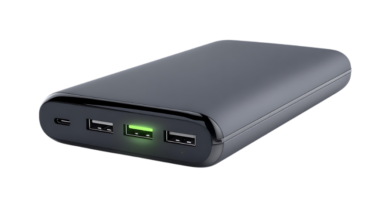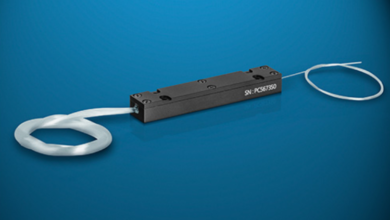On Premise Deepfake Detection: A New Level of Identity Verification Security

As time passes, the potential of artificial intelligence for both innovation and misuse will also continue to develop. One of the most imminent dangers coming out of this digital age is the spread of deepfakes – synthetic media created with AI, often to alter video or audio content in order to deceptively represent real people. Although cloud-based tools have historically been at the forefront of identifying deepfakes, there is a need to embrace more secure, private, and controlled environments in the form of on-premise deepfake detection, as businesses and institutions move in this direction.
This change is not a question of choice; it’s becoming a must-have in industries that require data privacy, compliance, and real-time analysis where none of the three can be compromised.
What is On-Premise Deepfake Detection?
On-premise deepfake detection is the implementation of artificial intelligence models and detection algorithms into an organization’s local infrastructure. Unlike the cloud-based tools whereby media has to be uploaded to off-site servers for processing, on-premise solutions keep all the processing inside the premises.
This method has three key advantages:
Enhanced Privacy: Sensitive biometric information like facial scans, voice samples, or video clips never exit the network of the organization, thus reducing the risks of data breach to the barest minimum.
Real-Time Detection: Without having to depend on internet speed or external servers, detection can be immediate – very important for such cases as secure building access or live interviews.
Compliance and Control: For industries with highly regulated frameworks (health care, banking, or defense), on-premise systems provide total control on the usage and storage of data.
With enhanced deepfake technology, organizations need to change from the reactive approach to proactive. Properly implemented, on-premise solutions are an important step in that direction.
How Deepfakes Are a Major Security Threat.
Nowadays, deepfakes are no longer a prank for the internet and social media jokes. They have become a real cyber threat with actual world damage potential.
Key areas of concern include:
Identity Theft: Deepfakes can be utilized by fraudsters to carry out video call impersonation, avoid facial recognition, or send forged documents for onboarding.
Corporate Espionage: Manipulation of stock prices or leaking false company information can be done with fake videos of CEOs or executives.
Evidence Manipulation: In the legal and law enforcement environments, tampered video evidence can jeopardize investigations and justice outcomes.
In such high-stake settings, it is not sufficient to just recognize the face. You must know if that face is of a real, live person and not an AI-created fake.
The role of Liveness Detection in the Deepfake Defense.
Liveness detection is one of the most effective means of fighting deep fakes. This technology is set up to detect if a biometric sample, which is usually a face or a voice, is being presented by an actual live person or a spoofed source such as a video replay or a 3D mask.
Liveness detection is an important authentication layer in on-premise systems. It is not just locating a person. it is about their presence being confirmed in real time.
Types of Liveness Detection:
Passive Liveness Detection: Works without any interaction from the user. It analyzes such cues as micro-expressions, light reflections, and skin texture.
Active Liveness Detection: Mandates the user to do something, like blinking, turning the head, or smiling. This may be more robust but could potentially impact on user experience, if not implemented appropriately.
Deepfake detection in combination with liveness detection can significantly decrease the potential of spoofing attacks particularly in high-security environments when using on-premise systems.
Real World Uses of On-Premise Deepfake Detection
Let’s see how different sectors are incorporating these technologies so as to be ahead of the curve:
1. Banking and Finance
Financial institutions are increasingly adopting biometric verifications for onboarding and approvals of transactions. Deepfake attacks in this domain can cause huge financial losses. On-premise systems guarantee that the customer data stays on protected servers and that the person on the screen is indeed who he or she says to be – and alive.
2. Healthcare
Patient data and medical records are of sensitive nature. Hospitals and telehealth providers employ the use of biometric systems to access patients for login and consultations. As deepfake threats are increasing, real-time, on-premise analysis with the help of liveness detection protects patient identity and privacy.
3. Government and Law Enforcement
Deepfake videos can be used for the spread of misinformation or the manipulation of legal evidence. Law enforcement bodies get advantage from on-premise systems wherein the authenticity of video or audio evidence can be quickly and discreetly checked, thus making the legal process more reliable.
4. Enterprise Security
Facial recognition for physical access control is becoming popular among companies. A poorly secured system may be bypassed by a deepfake. When combined with the on-premise deepfake detection tools, liveness detection can help enterprises greatly enhance the perimeter defenses.
Implementing an Effective On-Premise Strategy
Installing an on-premise deepfake detection solution is not a plug and play solution. It is a process that requires proper planning, appropriate tools, and constant updates. Key considerations include:
Infrastructure Compatibility: Make sure the detection system can be incorporated into the prevailing hardware and software.
Model Accuracy: Select models that are trained using different datasets to minimize false positives and negatives.
Regular Updates: Deepfake techniques are evolving rapidly. It is necessary to update models often for them to remain effective.
Regulatory Alignment: Ensure that the system complies with GDPR, HIPAA, or other appropriate frameworks.
Partnership with trusted vendors who specialise in AI security and biometric technologies is a necessity for long-term success.
Conclusion
Deepfakes are now no longer a matter of the future – they are a present threat. As these synthetic medias keep on testing the identity verification processes that have been used in the past, organizations need to strengthen their defenses. On-premise deepfake detection is set to be the new gold standard for privacy and reliability conscious industries that cannot afford to have their privacy compromised.
By integrating state-of-the-art AI models and liveness detection into their on-site security architecture, organizations can make sure that the faces they’re looking at aren’t just recognizable – but actual, living, and valid.






